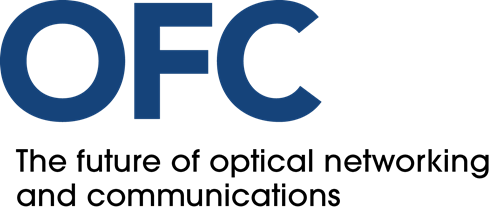SC546 - Applications of Coherent Distributed Fiber Sensing in Optical Communication Networks
15 Mar 2026
08:30 - 12:30
Short Course Level
Short Course Description
This short course focuses on fiber sensing utilizing the deployed active fiber-optic telecommunication network. Specifically, the curriculum emphasizes distributed fiber sensing through the analysis of backscattered light from optical fibers, with a primary concentration on distributed acoustic sensing (DAS). The course will encompass the foundational principles of DAS, various implementation methodologies, and strategies for integrating DAS into an optical network without compromising co-propagating data channels. Furthermore, it will explore diverse use-cases across both terrestrial and subsea networks. The objective is to acquaint participants with the concept of distributed fiber sensing, its underlying optical technologies, and the potential advantages of implementing network-scale fiber sensing. Applications discussed will include prospective enhancements in network reliability and performance, as well as the enablement of novel applications beyond traditional telecommunications.
Topics covered:
Introduction to distributed fiber sensing
- Scattering mechanisms
- Rayleigh backscattering
- Brillouin scattering
- Raman scattering
- Considerations for networks with speciality fibers
- Enhanced backscattering fiber
- Hollow-core fiber
Distributed Acoustic Sensing (DAS) Interrogators
- Coherent measurements of Rayleigh backscattering
- Optical Time Domain Reflectometry (OTDR)
- Optical Frequency Domain Reflectometry (OFDR)
- Coded/Correlation-based implementation
Network-scale fiber sensing
- Co-existance with telecom traffic
- Fiber sensing in terrestrial meshed networks
- Fiber sensing over repeated submarine cables
Use-cases of network-scale fiber sensing
- Network protection
- Environmental monitoring
- Infrastructure monitoring
- Disaster effect mitigation
Short Course Benefits
- Understanding of the underlying scattering mechanisms enabling distributed fiber sensing using telecom fibers
- Foundational understanding for various sensing methods
- Understanding of the key building blocks and signal processing required to implement a distributed acoustic sensing (DAS) system
- Discuss key aspects of network-scale fiber sensing, including co-existence of fiber sensing with the telecom channels
- Understanding of how fiber sensing can be used to improve network reliability
- List several non-telecom applications that can be enabled by enabling fiber sensing using the deployed fiber-grid
Short Course Audience
This course is designed for engineers, scientists, managers, and students. Participants should have a foundational understanding of optical fibers and communication systems. The course will explore how existing optical networks can be utilized for fiber sensing, without requiring prior knowledge of fiber sensing techniques. Upon completion, attendees will possess a thorough understanding of the capabilities and difficulties associated with network-scale fiber sensing.
-
Mikael Mazur
Nokia Bell Labs, United States
Dr. Mikael Mazur received his PhD from Chalmers University of Technology, Sweden in 2019. In his dissertation he studied optical frequency combs in optical communications, focusing on multi-wavelength signal processing schemes enabled by the comb coherence. In Jan 2020 he joined Bell Labs, NJ, as a member of technical staff in the advanced photonics research department. Currently his main research focuses developing novel fiber-optic sensing systems and real-time signal processing to seamlessly integrate sensing within optical data transmission infrastructure. With a particular focus on leveraging submarine cables, he is actively researching real-time deep-ocean monitoring for critical applications in environmental, oceanographic and geophysical investigations, and the development of cutting-edge tsunami and earthquake early warning systems. He is a member of IEEE, OPTICA and the SSA. He is also an active member of the Joint Task Force on SMART cables as well as the Suboptic working group on Sensing using Operational Subsea Cables.
